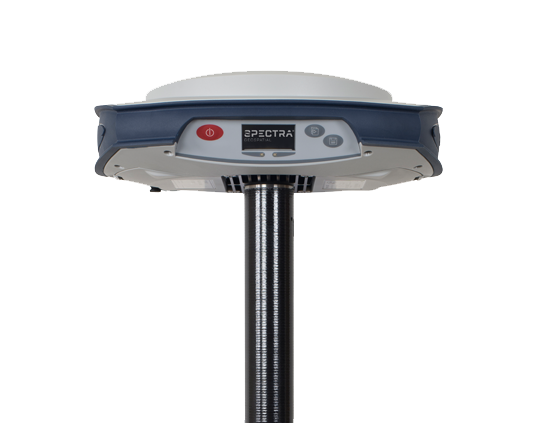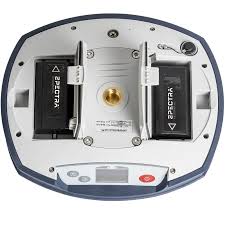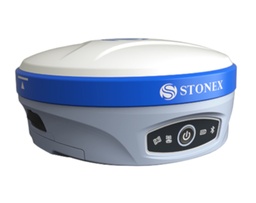Spectra-Precision SP85 GNSS receiver
GNSS CHARACTERISTICS
600 GNSS channels – GPS L1C/A, L1P(Y), L2C, L2P(Y), L5 – GLONASS L1C/A, L1P, L2C/A, L2P, L3 – BeiDou (Phase II) B1, B2 – Galileo E1, E5a, E5b – QZSS L1C/A, L1C, L2C, L5 – IRNSS L5 – SBAS L1C/A, L5 (WAAS, EGNOS, MSAS, GAGAN, SDCM) – L-band MSS
Support for Trimble RTX™ real-time correction services
Patented Z-Blade technology for optimal GNSS performance – Full utilization of signals from all 7 GNSS systems (GPS, GLONASS, BeiDou, Galileo, QZSS, IRNSS and SBAS) – Enhanced GNSS-centric algorithm: fully-independent GNSS signal tracking and optimal data processing, including GPS-only, GLONASS-only, Galileo-only, or BeiDouonly solution (Autonomous to full RTK)
Fast Search engine for quick acquisition and re-acquisition of GNSS signals
SBAS ranging for using SBAS code & carrier observations and orbits in RTK processing
Patented Strobe™ Correlator for reduced GNSS multi-path
Up to 20 Hz real-time raw data (code & carrier and position output)
Supported data formats: ATOM, CMR, CMR+, RTCM 2.1, 2.2, 2.3, 3.0, 3.1 and 3.2 (including MSM), CMRx and sCMRx (rover only)
NMEA 0183 messages output
REAL-TIME ACCURACY (RMS) (1)(2)(7)
SBAS (WAAS/EGNOS/MSAS/GAGAN)
Horizontal: < 50 cm
Vertical: < 85 cm
Real-Time DGPS position
Horizontal: 25 cm + 1 ppm
Vertical: 50 cm + 1 ppm
Real-Time Kinematic Position (RTK)
Horizontal: 8 mm + 1 ppm
Vertical: 15 mm + 1 ppm
Network RTK (6)
Horizontal: 8 mm + 0.5 ppm
Vertical: 15 mm + 0.5 ppm
REAL-TIME PERFORMANCE
Instant-RTK® Initialization – Typically 2 sec for baselines < 20 km – Up to 99.9% reliability
RTK initialization range: over 40 km
POST-PROCESSING ACCURACY (RMS) (1)(2)(7)
Static & Fast Static
Horizontal: 3 mm + 0.5 ppm
Vertical: 5 mm + 0.5 ppm
High-Precision Static (3)
Horizontal: 3 mm + 0.1 ppm
Vertical: 3.5 mm + 0.4 ppm
DATA LOGGING CHARACTERISTICS
Recording Interval: 0.05 - 999 seconds
PHYSICAL CHARACTERISTICS
Size: 22.2 x 19.4 x 7.5 cm (8.7 x 7.6 x 3.0 in)
Weight: 1.17 kg (2.57 lb)
User Interface: Graphical PMOLED display • WEB UI (accessible via WiFi) for easy configuration, operation, status, and data transfer
I/O Interface: RS232 serial link • USB 2.0/UART • Bluetooth 5.0 dual mode • WiFi (802.11 b/g/n) • 3.5G quad-band GSM (850/900/1800/1900 MHz) / penta-band UMTS module (800/850/900/1900/2100 MHz)
Memory: 4GB internal memory NAND Flash (3.5 GB user data) • Over two years of 15 sec. raw GNSS data from 14 satellites • SD/SDHC internal memory card (up to 32GB)
Operation: RTK rover & base • RTK network rover: VRS, FKP, MAC • NTRIP, Direct IP • CSD mode • Post-processing • RTK bridge • UHF repeater • UHF networking • Trimble RTX (satellite and cellular/IP)
Environmental Characteristics: Operating temperature: -40° to +65°C (-40° to +149°F) (4) • Storage temperature: -40° to +85°C (-40° to +185°F) (5) • Humidity: 100% condensing • IP67 waterproof, sealed against sand and dust • Drop: 2m pole drop on concrete • Shock: ETS300 019 • Vibration: MIL-STD-810F
Power Characteristics: 2 Li-Ion hot-swappable batteries, 41.4 Wh (2 x 7.4 V, 2800 mAh) • Battery life time (two batteries): 10 hrs (GNSS On, and GSM or UHF Rx On) • External DC power: 9-28 V
Standard System Components: SP85 receiver • 2 Li-Ion batteries • Dual battery charger, power supply and international power cord kit • Tape measure (3.6 m / 12 ft) • 7 cm pole extension • USB to mini-USB cable • Hard case • 2 year warranty
Optional System Components: SP85 UHF Kit (410-470 MHz 2W TRx) • SP85 Field Power Kit • SP85 Office Power Kit • Data collectors – ST10 – Ranger™ 7 – Ranger™ 3 – T41 – MobileMapper® 60 – MobileMapper® 50 • Field software – Survey Pro – Survey Mobile (Android) – SPace control app for 3rd party devices (Android)
1 Accuracy and TTFF specifications may be affected by atmospheric conditions, signal multipath, satellite geometry and corrections availability and quality. 2 Performance values assume minimum of five satellites, following the procedures recommended in the product manual. High multi-path areas, high PDOP values and periods of severe atmospheric conditions may degrade performance. 3 Long baselines, long occupations, precise ephemeris used 4 At very low temperatures UHF module should not be used in the transmitter mode. 5 Without batteries. Batteries can be stored up to +70°C. 6 Network RTK PPM values are referenced to the closest physical base station. 7 Receiver initialization time varies based on GNSS constellation health, level of multipath, and proximity to obstructions such as large trees and buildin










![[J-Ant-Tr2-1] JAVAD TRIUMPH-2 GNSS Receiver (Base)](/web/image/product.product/2797/image_256/%5BJ-Ant-Tr2-1%5D%20JAVAD%20TRIUMPH-2%20GNSS%20Receiver%20%20%28Base%29?unique=a4dd3aa)
![[J-Ant-TLS-1] JAVAD TRIUMPH-LS GNSS Receiver (Base)](/web/image/product.product/3029/image_256/%5BJ-Ant-TLS-1%5D%20JAVAD%20TRIUMPH-LS%20%20GNSS%20Receiver%20%20%28Base%29?unique=50157af)
![[56208] Pentax G6 GNSS receiver (Ni)](/web/image/product.product/3581/image_256/%5B56208%5D%20Pentax%20G6%20GNSS%20receiver%20%20%28Ni%29?unique=93fd39a)
![[104234-00] Spectra Precision SP60 GNSS receiver (L1 GPS)](/web/image/product.product/663/image_256/%5B104234-00%5D%20Spectra%20Precision%20%20SP60%20GNSS%20receiver%20%20%28L1%20GPS%29?unique=5bc276a)
![[94334-10] Spectra Precision SP80 GNSS receiver (With UHF 430-470 MHz 2w TRx and Survey Office intermediate)](/web/image/product.product/1238/image_256/%5B%E2%80%8E94334-10%5D%20Spectra%20Precision%20SP80%20GNSS%20receiver%20%20%28With%20UHF%20430-470%20MHz%202w%20TRx%20and%20Survey%20Office%20intermediate%29?unique=4e33ed3)
